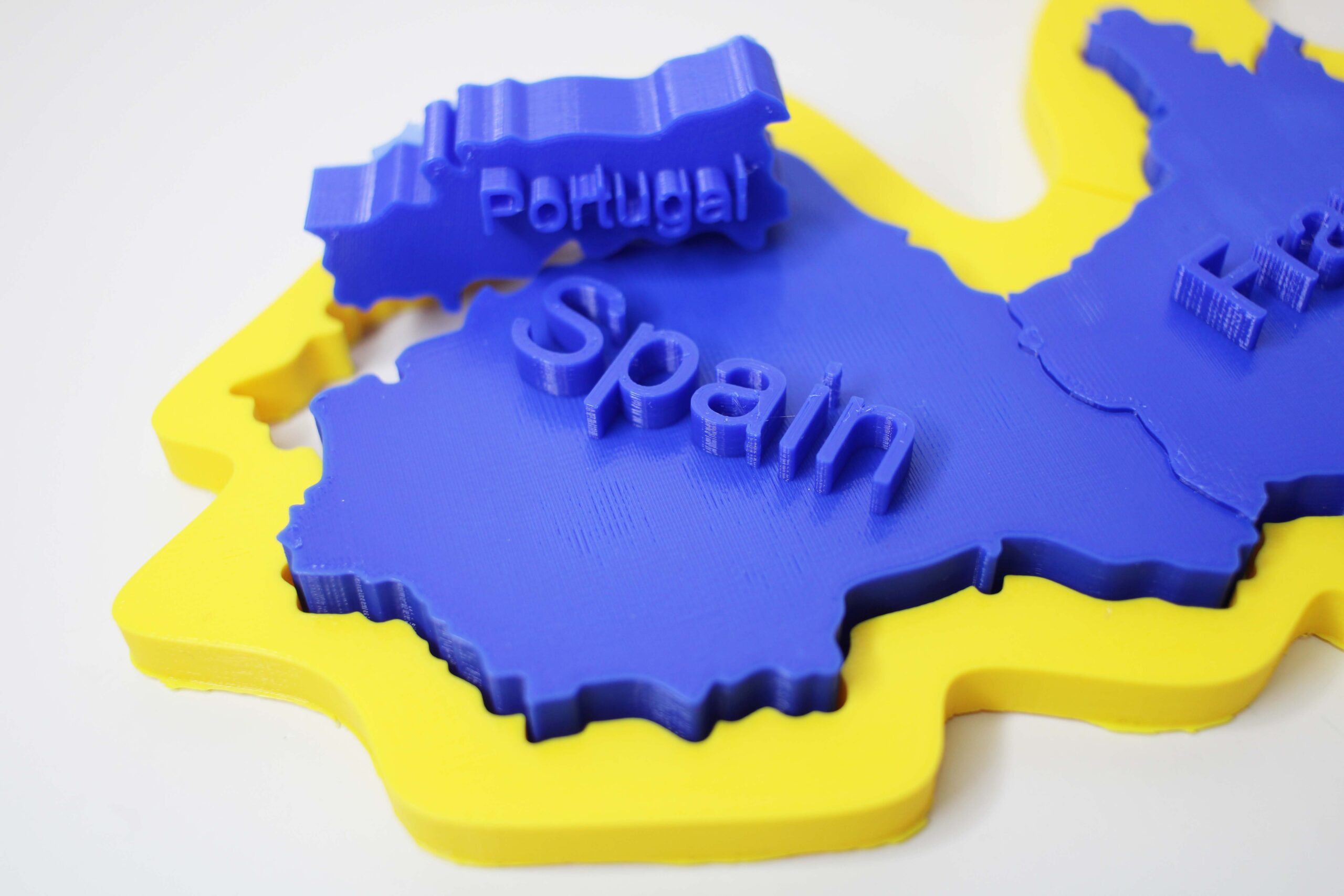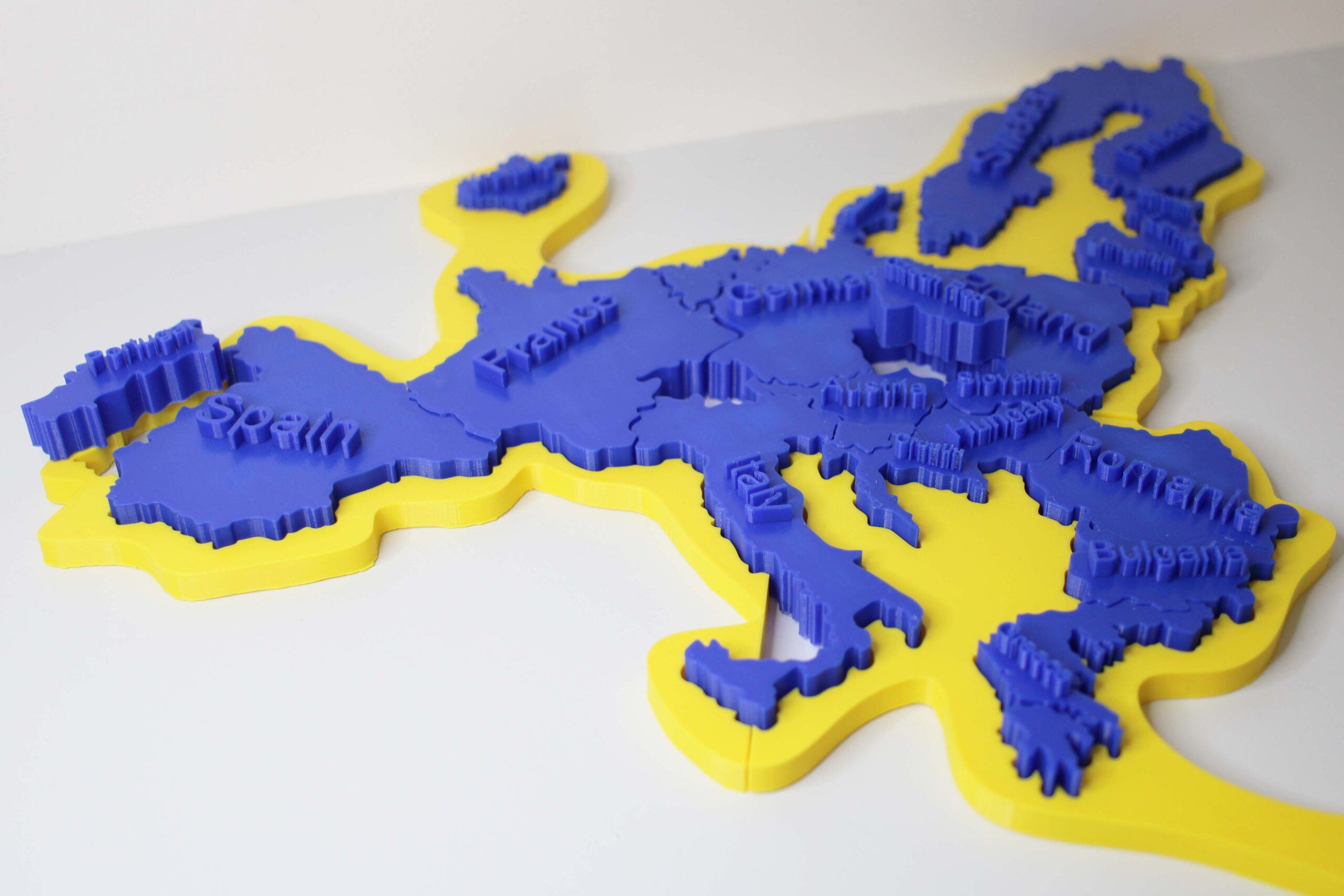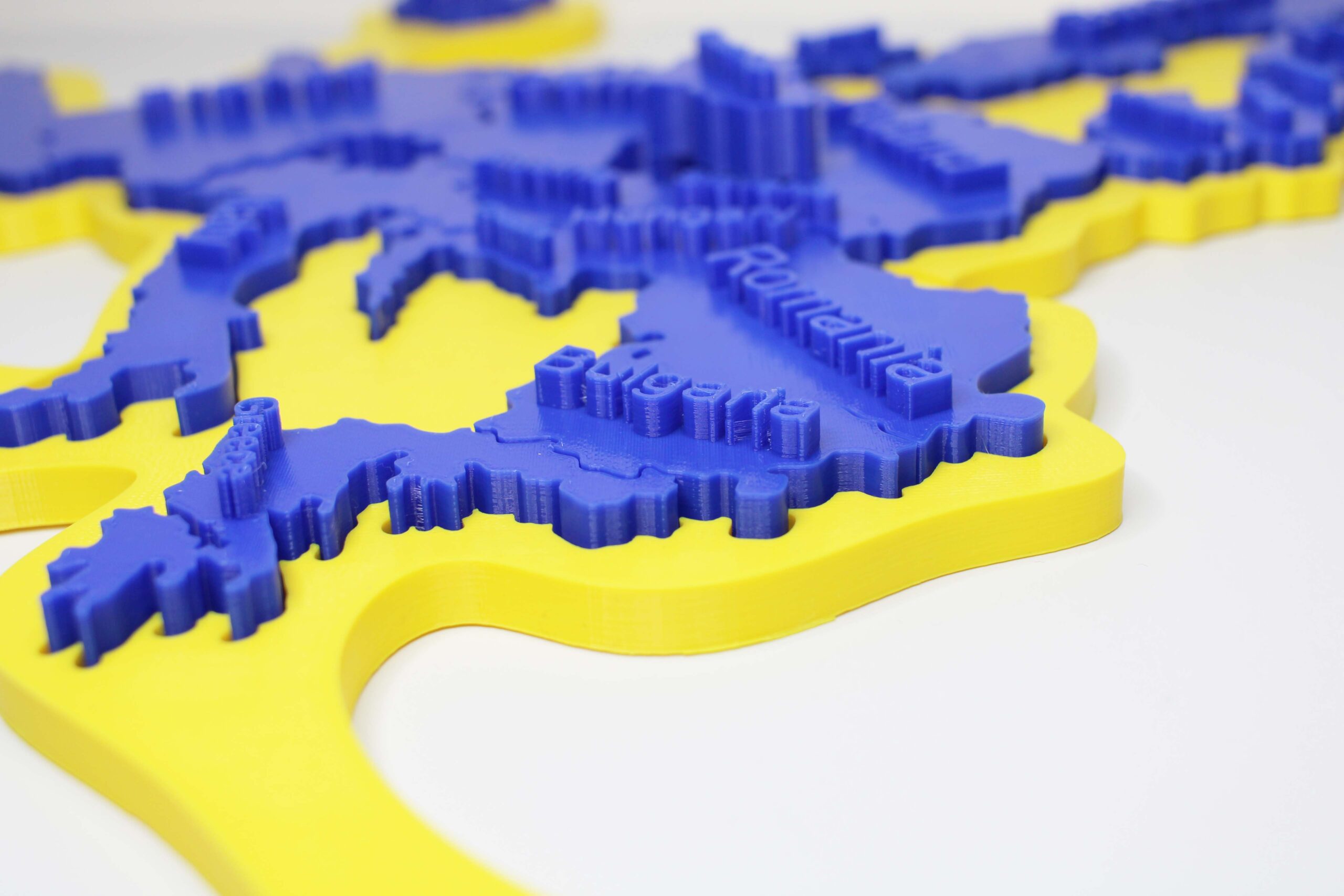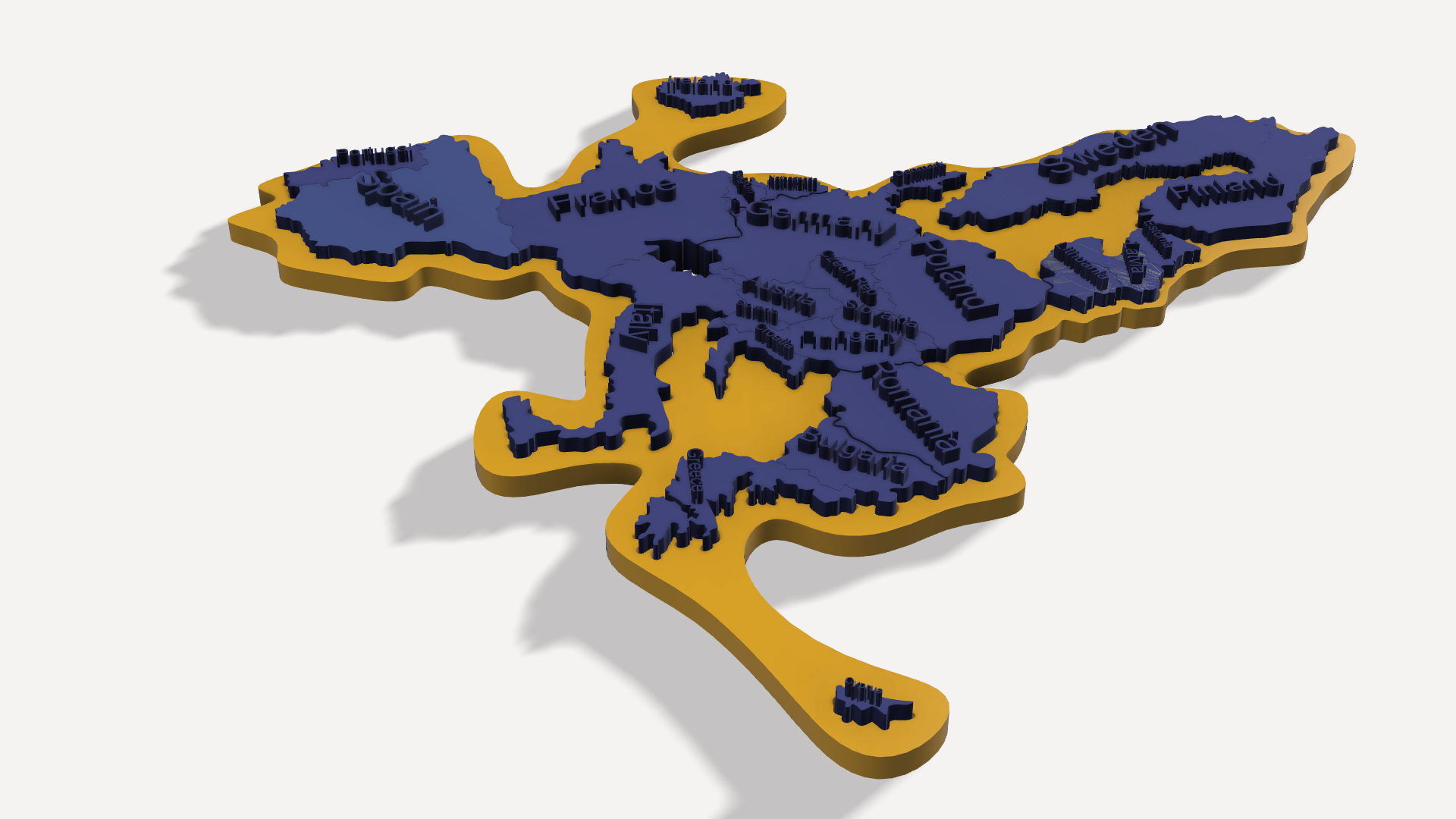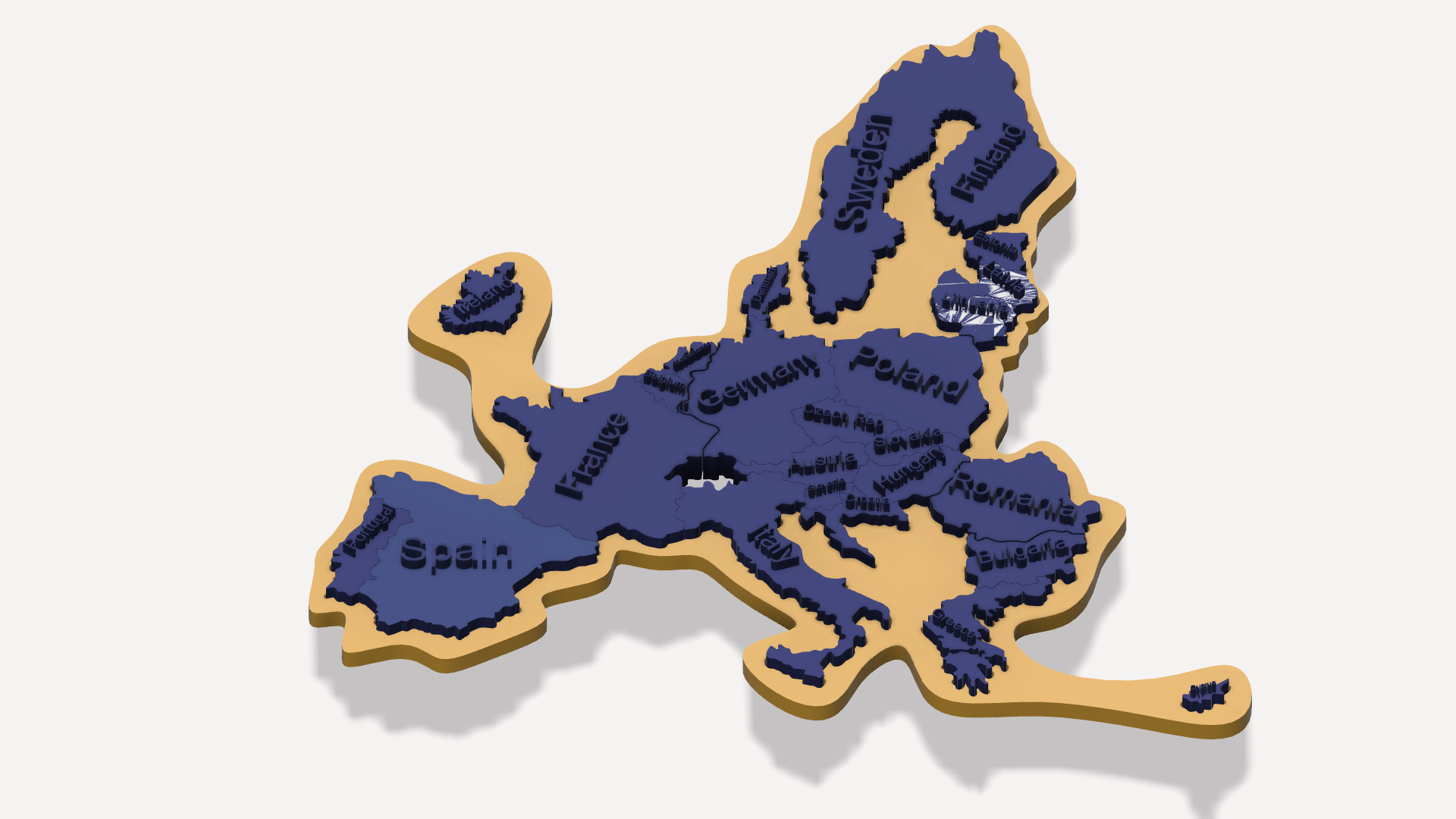
About
Exercise name:
Map Puzzle
Which cognitive area is it related to?
Abstract thinking, Coordination, Identity affirmation, Memory, Orientation, Team work and socialization
Description of the exercise:
The map puzzle stimulates the creation of a map (of the person’s country, Europe, the world) from separate parts (provinces, countries, continents and oceans/seas). This moderately challenging and fun game may involve 2-3 players who will work together to complete the task. It is suitable for people with mild to moderate dementia.
Who is the game for – The game is suitable for professionals in a day center and residential service, as well as for a family caring for a loved one with dementia. It is suitable for people with mild to moderate dementia.
Materials needed – pieces of a puzzle with which to arrange the different countries in the appropriate form on the map.
Preliminary preparation – Put the pieces of the puzzle in the Memorial Chicken. Each country must have the name written on top so that it can be read. One box for several people can be used for this game. No personal memory box is required for each participant.
Participants – a person with dementia (1, 2 to 3), caregiver.
This game is run by a caregiver and can have 1 to 3 participants with dementia.
Location – Choose a quiet place where the person with dementia and the person around you feel comfortable, e.g. around a dining table or coffee table where photos can be spread. There must be enough light. Make sure the person with dementia has taken glasses or other aids such as a hearing aid so that you can communicate.
Presentation – explain what you will do together, in a calm and fun way.
Ask the person with dementia to take the different parts of the puzzle out of the Memory Box. (Support him if necessary, but wait calmly for him to take things out of the box). If 2 or 3 people with dementia are involved in the game, it is good to first agree on who will take things out of the box. The whole group has to turn the tiles of the states. Then read together all the countries you need to arrange. Start with the nation state and rank the neighboring countries first. Play while the participants are interested. If you can’t handle all the countries, leave the puzzle for the next day, when you will return to the game.
Finally, greet the other players for the well-done job!
How can this model be used at home and in residential care/nursing homes?
Dementia affects a person’s cognitive functions, self-identity, memory and concentration. It develops gradually and leads to a change of personality. People with dementia have a problem with memory, which leads to recall difficulties and problems with speech, coordination, abstract thinking, concentration, planning, orientation with regard to place and time, frequent mood swings.
This type of exercise will stimulate:
• Concentration
• Planning
• Memory
• Coordination
• Abstract thinking
• Spatial orientation
• Self-identification
This is small group game that stimulates recall and concentration and can spark self-awareness by stimulating self-recognition. It supports socialization and will initiate discussions on participants’ birth place, origin, places visited, etc.
What benefits can be obtained with its use?
This exercise will help maintain
• Team work
• Socialization
• Mood improvement
• Memory
• Feeling of self, spatial awareness
• Planning
• Abstract thinking
Technical specification of the model
Technology:
FDM / PLA
Material:
PLA
Colour (One piece one colour):
White, yellow, green, black, red, orange, gray, blue…
Suitable dimensions for its use in the classroom (MM):
arts relative to overall puzzle size of 500 x 350
Should the piece be resistant or be subjected to stress?
Yes
Should it be printed during meeting with person with dementia, before or after?
Before
Do you have to paint the model?
No
Number of pieces of which the model is composed:
30
Ensemble type if necessary (slot, clip, screwed ...)
No
Accuracy and definition required. (Quality) Low, mid or High.
Mid
Images
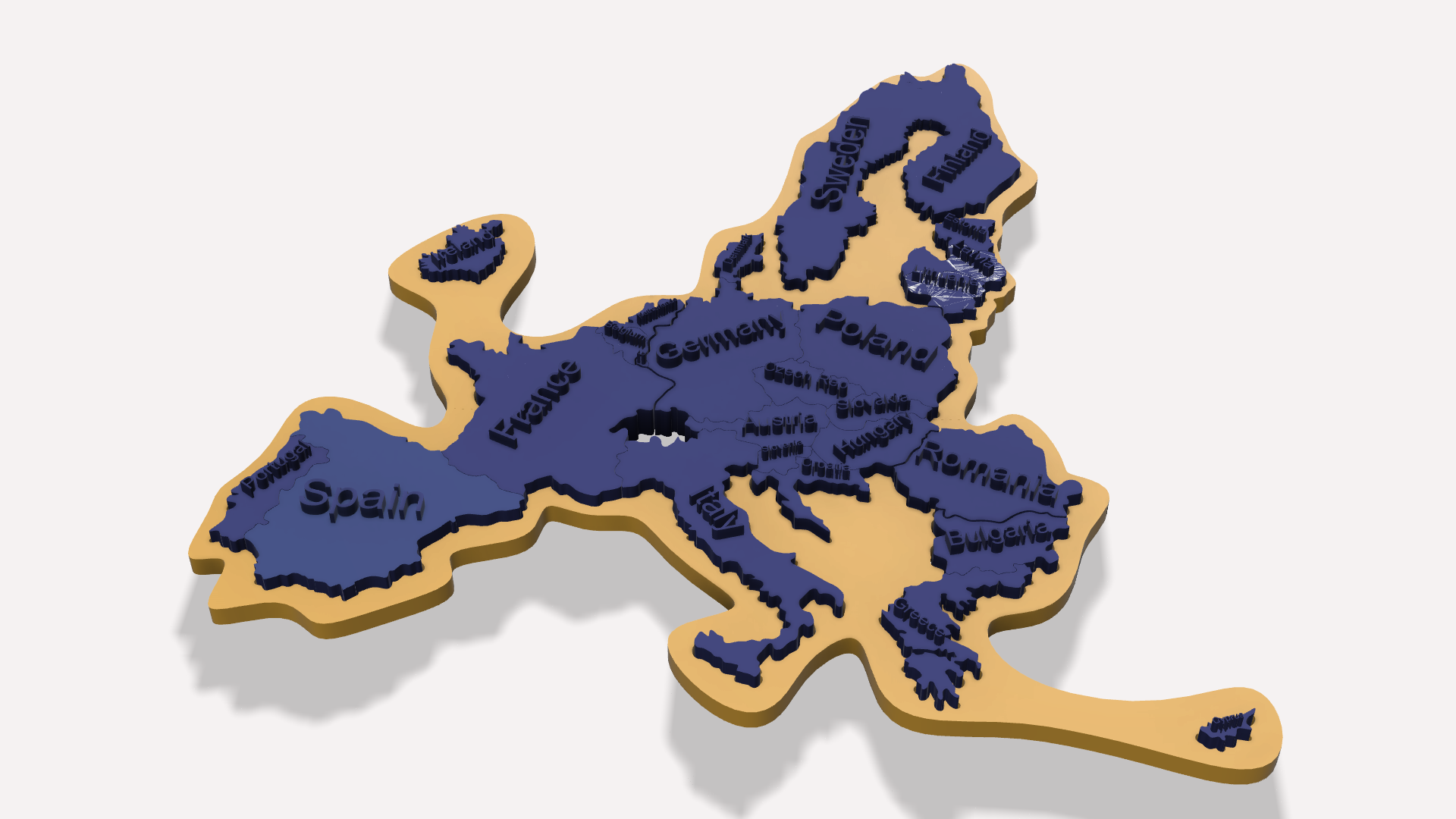
STL files viewer
Good luck!

